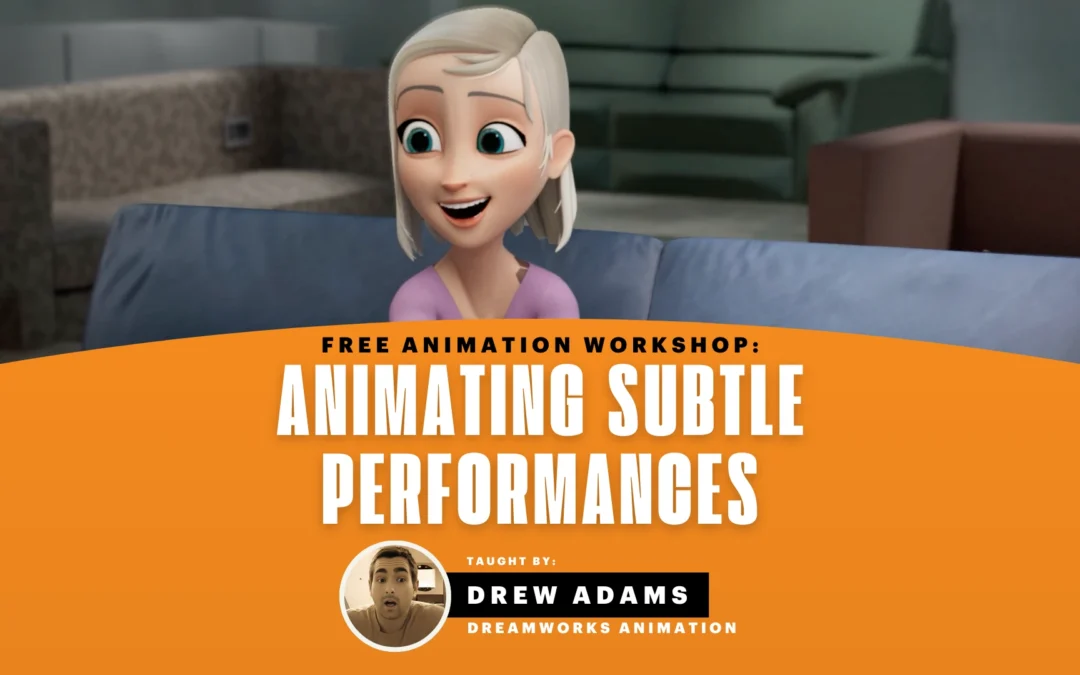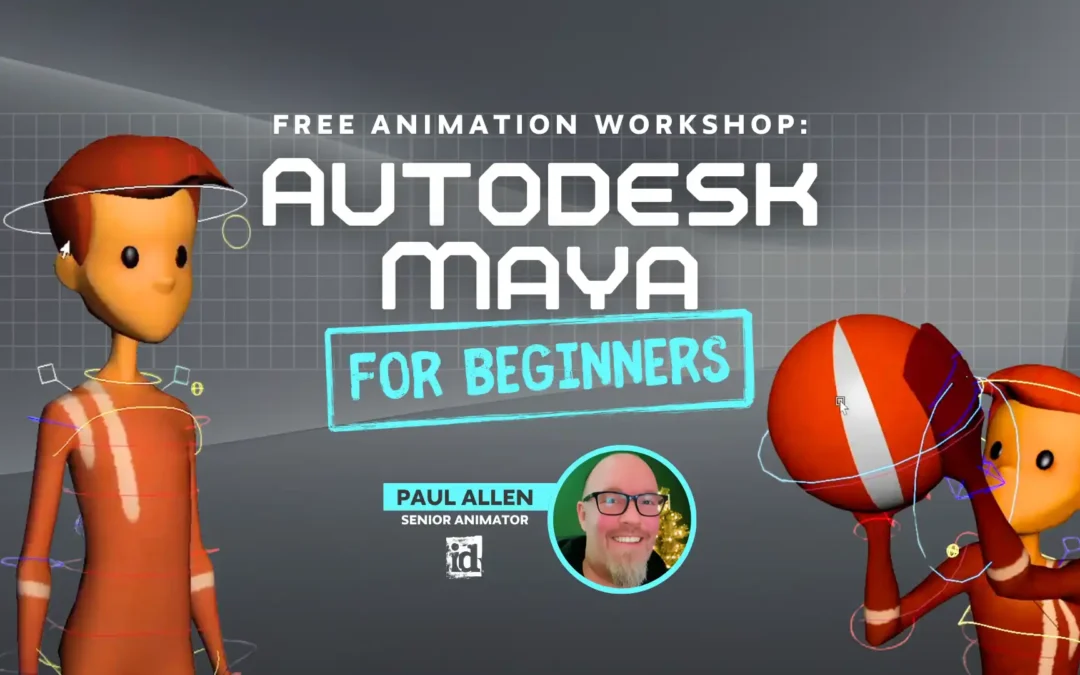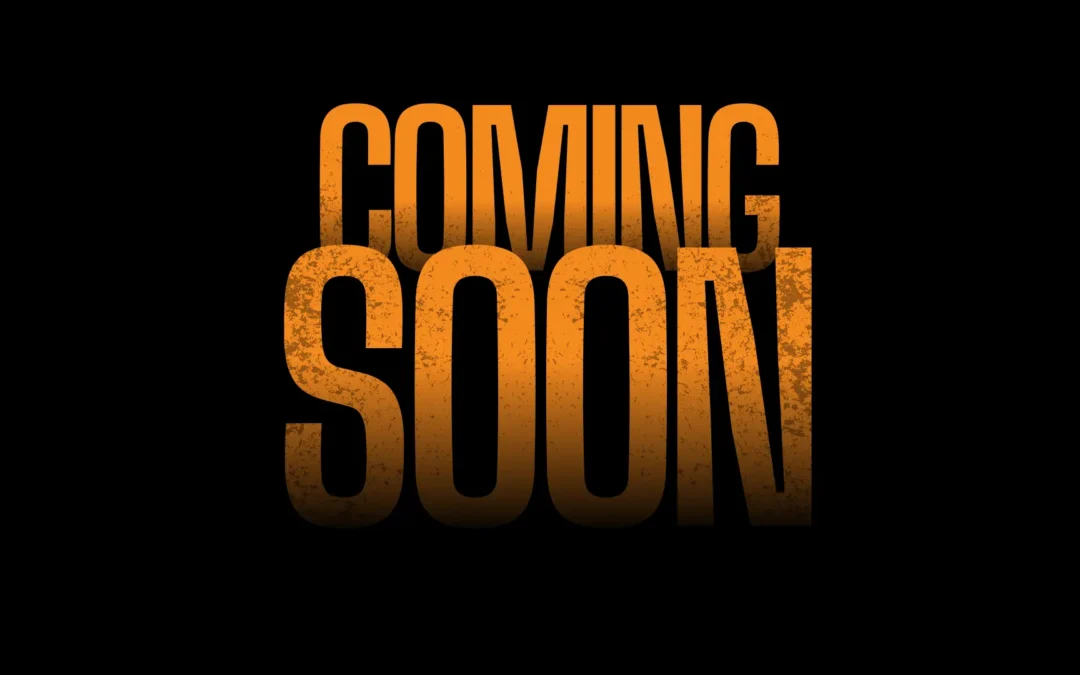
We asked Animation Mentor alumnus Sir Wade Neistadt to tell us all about his journey from animation student to becoming a DreamWorks Animation Trainer, and he 100% delivered. His highly-entertaining story is proof that great things can happen when you follow your dreams! Enjoy.
What you’re about to read is a fairly detailed account of how I started working at DreamWorks Animation, where I’ve been working for two incredible years. I recently started a YouTube Channel, the primary series is titled “How to Become an Animator”, and it documents my creative journey toward the goals that so many of us have. I’ll dive into certain details I don’t cover in those videos, and those videos will have lots of information I can’t fit into this post.
If you want to see the projects I talk about here, if you’re looking for additional educational content and animator interviews, or if you want to see what I’m up to now, please don’t hesitate to check it out and to ask questions!
I’ve always struggled with wanting to do too many things and having too many interests, always nervous that I’d be a Jack of All Trades but a Master of None—something I was convinced would keep me from being skilled enough to pursue whatever passion I ended up finding. I grew up in Southern California, but not the part that’s full of artists, techies, and storytellers. I lived my first 18 years in a desert located about halfway between Los Angeles and Las Vegas, a quiet town with very few people who were any good at using a computer in 2005.
It was around that time that Calvin and Hobbes and the first several Captain Underpants books had inspired me to start drawing comic books. With artistic inspiration from Dragon Ball Z and a new show called Danny Phantom, I started working on my first real creative projects— comic books. My interest in storytelling and art would pair with my technical interest in computers and middle-school-level web design in HTML, and I began doing animation in Macromedia Flash MX.

The Boss Baby wrap party!
I started some early explorations into graphic design—even landed a few gigs as a high schooler and used the money to buy the first Wacom Bamboo tablet that they made. I used it to draw logo animations in Flash and began using keyframes to make little animated comics. I found a stickfigure animation program Pivot Stickfigure Animator and got my first taste of what was essentially digital stop-motion. I also started doing parkour, started a club, and began teaching parkour to other students in the community, filming and editing my own parkour videos and posting them on YouTube. This got me interested in stunts, and I started making skits where lightsabers and explosions were needed—so I convinced my high school to pay for FXHome VisionLab Studio “in order to make high quality content for the morning broadcast with green screens and skits to promote events.”
Despite all of these now-obvious signs that I was going to go into animation and VFX, I still didn’t know I could have a future in any of these “hobbies,” and I applied to colleges to be an electrical engineer with a minor in business. For some dumb reason I picked a university near San Diego, CA that didn’t have an engineering program so I could only do the business part of my plan. Immediately after getting to this university, though, I made two realizations: 1) There’s a thing called “computer science” that gets you hired to do computery smart stuff and leads to some high-paying jobs, and 2) I hated that college. So I switched my major to computer science and planned to transfer to another university at the end of the first year. Before that, I found out a nearby community college was offering a class in 3D Animation & Modeling—using some complex software called Autodesk Maya 2012. So I enrolled and was told: Guess what?
Animated movies aren’t magically spawned from nothing—people get hired to MAKE them!!!
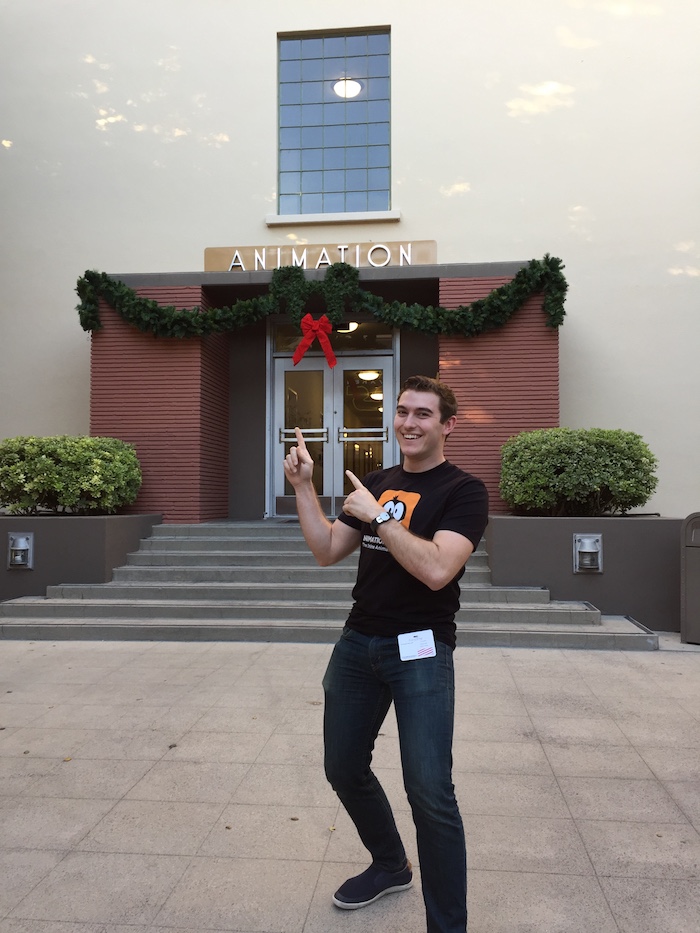
Touring Disney with Animation Mentor
“WHAT???” I thought, “I love movies! Especially animated movies! How can I learn that stuff? Hmm…Disney and DreamWorks are in SoCal and Pixar and ILM are in NorCal. Well I don’t know if I want to ONLY work in animated movies, The Avengers (2012) just came out and I’d love to do stuff like that too! I should keep my options open and move to NorCal where both ILM and Pixar are—I bet the schools up there must help students get into those studios.” And to show how little I knew about getting into these studios, I found the phone number for Pixar and called the reception desk asking to talk to Ed Catmull or John Lasseter. Surely one of those guys could tell me whether I should pursue animation or VFX, and whether computer science was the way in—after all Ed Catmull came from that background! Unfortunately, the nice lady at reception didn’t forward my call, but at that point I was determined to get into the industry one way or another.
My extended family was trying to make sure I stayed in good colleges to ensure I’d get a degree in something that would prepare me for a comfortable, safe job which would lead to a happy life. “Going to a 4-year university is the only way to make sure that happens,” they told me; it’s what everyone always told me, but California has weird rules around changing colleges. Bottom line: if I left my university having only finished my first year, I would not be eligible to move into another university and I’d have to go to a community/junior college. Everyone told me not to, but it was the only way to get closer to Pixar and ILM without spending an extra moment at that school I despised. *Quick side note, my parents were very supportive of my dreams, I just have a close extended family and I felt it necessary to try to get them on board as well. Thanks Mom and Dad!!*
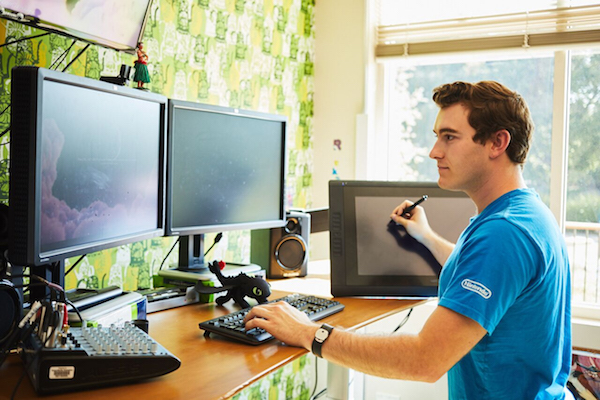
Getting some work done.
So I packed up and moved up to Northern California to go to Cañada College, the only community college I could find with a thriving multimedia & animation program. I LOVED IT. In the year I was there I took every 3D-related class they offered, alongside the Computer Science and general education classes I was required to take for my CS major. It’s also useful to mention that at this time I turned to YouTube seeking any extra information I could find to grow and learn more about film and film production. I found Film Riot, Video Copilot, Red Giant, and TONS of tutorials to consume while I worked, in my uninteresting classes, while I ate, and while I was falling asleep. I ate a peanut butter sandwich, a bowl of fruits, a bowl of veggies, and two glasses of water twice a day, every day for an entire year. The only exception was when I would treat myself to Chinese takeout, pizza, or a good burger on nights I went to see the new exciting films in theaters. I was obsessed, focused, and I couldn’t learn fast enough! I needed more! I was taking 8 classes at once, I worked in the library’s tutoring center, teaching supplemental Computer Science classes to 30 students at a time, tutoring physics, calculus, and Maya topics on the side of teaching, and I’d go home to follow tutorials and learn about filmmaking. Rinse and repeat over and over again.
And I don’t want you to think that I was super talented at any of these things—I wasn’t. I was starting from ZERO, with only my middle/high school projects as experience, but I didn’t want to stay there so I hustled as hard as I possibly could to get better. I was a fast learner and a good tutor, able to understand concepts and relay them in a relatable way. But I still had no real direction or tangible goals.

Eventually, a day came that would change everything. A group called Campus MovieFest (CMF) came to my college offering a free competition: “We give you a camera for one week, and you make a 5-minute short film to compete against your schoolmates. Winner gets a free Adobe CC software subscription for a year and competes against other schools’ winning films. 26 of all films submitted get chosen to participate in an international film festival.”
I didn’t know anything about festivals and I didn’t really care, but a chance to try out some of the things I’d been learning was too great an opportunity to pass up. I pulled some friends together from my classes and the library—with scheduling and location issues I directed, acted in, and edited my first live-action VFX short “KERFLOOEY,” a comedic attempt at a film about a sick superhero who gets called into work anyway, sneezing open walls and coughing concussive bursts of lasers to haplessly battle his arch-nemesis. The film would take awards for Best Picture, Best Actor, and the only Best Special Effects award given in Northern California. I cannot overstate how excited I was. But back to work I went, I still had a year until the competition in Hollywood against the other schools’ winners.
Towards the end of my year at Cañada, after teaching a Computer Science lecture, I received an email from CMF that KERFLOOEY had been chosen as one of the 26 films selected to go to that festival I knew nothing about…The Cannes Film Festival. If you don’t know what that is, you’re right where I was when I first read it. So do what I did and Google it. My jaw dropped through the floor and into the classrooms below. WHAT? I had to prepare. I fundraised for the trip. My film was going to be submitted, but I still had to raise money so that I could accompany it to France for two weeks. The school donated, the Computer Science Club I had started sponsored me for some of the amount, I fundraised for some, and my family helped out as well. My stellar grades dropped to barely passing, and I even failed a math class because I no longer had time for school—I had to go to this event to see whether this whole idea of going into film/animation was something I could do. I was convinced I would find the answers there. Computer Science vs Animation. Animation or VFX? Do I need a degree? All questions I didn’t feel qualified to answer on my own.
I’ll jump to the spoilers: I didn’t answer any of those questions on that trip. But what did happen was far more important. I learned before going to Cannes that DreamWorks Animation was going to be premiering How to Train Your Dragon 2 at the festival, and somehow I managed to get tickets to the red carpet screening, mere seats away from director Dean DeBlois, Head of Character Animation Simon Otto, and the rest of the movie’s cast, Jay Baruchel, Kit Harrington, Gerard Butler, Cate Blanchett, America Ferrera, etc. I watched the whole movie, participated in a standing ovation, I even got to meet Jay and Kit after the screening! But most excitingly, I knew exactly what I was going to do next. I went back to my hotel room and called my parents, “I’m dropping out of college. I need to find an animation school. I’m going to be an animator and I think HTTYD is a trilogy… I want to work on How to Train Your Dragon 3 at DreamWorks!”

Meeting Matt Smith at Cannes
When I got back, I met with the animation profesor at Cañada. He told me that he’d heard good things about Animation Mentor, this online animation school that had mentors from all over the industry and a ton of alumni that went to work at different studios around the world! I signed up that night for a Creature Animation Workshop to learn how to animate dragons. I got a call the next day from the AM staff, “Hi! We saw you signed up for this workshop. Do you have any animation experience? We usually recommend taking this workshop no sooner than the 4th class with us, but it’s up to you if you’d like to go for it!” I figured I’d better listen, so 3 weeks later I started at the beginning with the first of the Character Animation CoursesCharacter Animation Courses.
I left my university, made a PowerPoint to explain to my family why I didn’t think a degree was going to be as useful in my career path, and I went to live with my parents to save money before moving back to LA during Class 5. I also went to CTN, the big annual animation convention in Burbank, twice during my time at AM, which led to me making a friend who would ultimately inform me of a job opportunity at DreamWorks in his department, the Education Department.
But before I can tell you about that, I need to mention that I was working full-time at Best Buy during most of AM until Class 6. At the beginning of Class 6 I decided that I couldn’t afford not to fully focus on the assignments—no distractions at all, not even a job. So I quit Best Buy and started eating into my savings paying crazy expensive LA-priced rent. I budgeted it out so I’d be fine for a few months beyond AM so I’d have time to find a job, but then I bought a new desktop computer to speed up my workflow, which set me back enough that by the time CTN came around and I met with that friend, this was the conversation that ensued:
Friend: So how’s work going? Best Buy, right?
Me: Oh! Actually I quit so I could focus on Animation Mentor!
Friend: That’s coo- wait.. What’re you doing about rent?
Me: I’m still working on that, the next bill is in about 5 days. My savings is pretty much depleted though.
Friend: Can I ask how much your rent is? Do you have enough?
Me: Sure! Rent is about [it was approx $1500 with other bills] and I have $37 in my account.
Friend: …
Me: …
Friend: …
Me: It’ll be fine though! I have a few ideas on how to make some money! I was thinking about starting a business to train business people in the new version of Microsoft Office!
Friend: There’s an opening in my department they’re hiring for, but it wouldn’t happen in 5 days; do you have skills in [we talked about the role]?
Me: Actually, yeah I totally do! How can I apply?
I went home and applied for the position, finished up an AM assignment, and made a website promoting my training services for business people to learn Office from me, then spent the next few days calling Chambers of Commerce to host the event in exchange for free training for their staff, and I called hundreds of businesses trying to enroll as many people as I could in the trainings. I ended up getting enough sales to cover my rent for the upcoming month and the day after I did the training, I got an email from DreamWorks Animation offering a phone interview.
I’m not going to go into the details of the interview at DreamWorks—but only because I have a whole video about it already on YouTube! My first few videos there are about what you’ve been reading about, but focused specifically on different stages of the journey. There’s a video for those early stickfigure fight animations and comic book characters, one for my college projects, one with all of my AM assignments and a list of my mentors in it! Then you hit the one about my interview, and another specifically about my 2 years at DreamWorks and a little tour around the campus.
What I’d like to share with you now is a little game of connect-the-dots. When I got hired at DWA, I learned that the person hiring me expected that the ideal candidate would have a technical background—someone who could handle some programming and could even help teach others to understand it. That candidate would also need to be able to train artists in software applications, demonstrate proficiency in 3D applications and a knowledge of workflows and production pipelines. This person needed to be able to design class handouts, update wiki pages, possibly help with media or video work. Above all, this person needs to be a student at heart, willing and wanting to grow and learn and to help others do the same with a student-first mentality.

Turns out that the first one, the requirement about coding, almost made them pass over my resumé—but my major in college was Computer Science, and I was a tutor for it. Technical background: Check. Experience training software? Self-started Microsoft Office Training Business just a week or so earlier. Check. 3D Applications and Workflow/Pipeline? Between my many classes in Maya, Animation Mentor’s lecture videos and demos, the class work I did at AM and the way we used AMP as a pipeline? Check, check. The rest? I hit that with my mix of web design, video experience, graphic design, and the fact that I truly love both learning and teaching.
I’m still super early in my career; I’m really only 2 years into it actually, even though I feel like I’ve been working at this stuff for about 13 years. And I’d never touched anything 3D until 3 years before I got to DreamWorks, which is amazing as well. My fear of being too much of a generalist and not specializing in anything really wasn’t something to be afraid of either! In fact, it really ended up helping with my personal journey, and I’m really happy to have done so many things in such a short period of time.
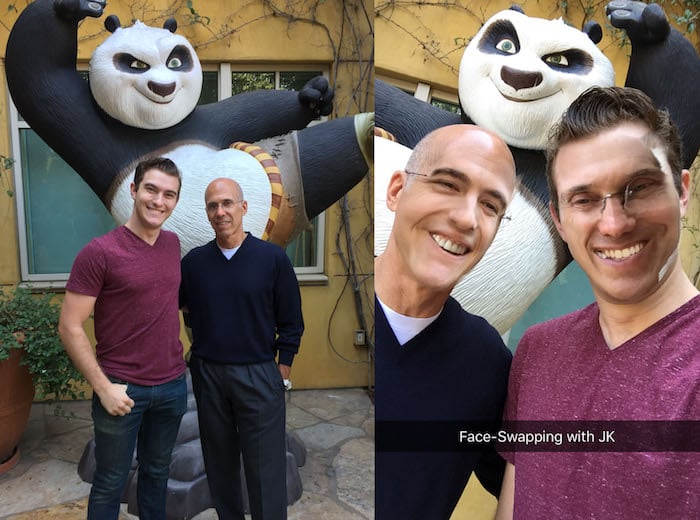
Face swapping with Jeffrey Katzenberg
What’s really incredible is the fact that I entered into Animation Mentor with the dream of working at DreamWorks to be a part of HTTYD3—and even though I’m not animating on the film, I’ve gotten to animate all of the characters for my own test shots! I had the opportunity to be a part of Flight School 3.0: a two-week curriculum built to prepare animators for flight shots on D3; I did my first test when I got there with Hiccup that I can show here, and I’ve done other shots since then with characters that I can’t reveal until after the movie is released! Animation Mentor was a huge part of making that dream a reality, and I’m honored to be asked to do this blog post for them! If you’re considering AM, know that it’s one of the best career and life decisions you can make.
Thanks for reading! Feel free to connect with me on Instagram, and I hope to see you over on YouTube as we all figure out together How to Become an Animator!
Want to learn from pro animators?
Start your animation journey by learning with professional animators from a variety of studios and career paths! Get more information about Animation Mentor’s Character Animation Courses.
